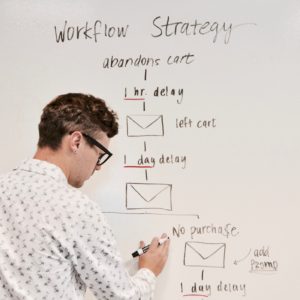Inspire to Innovate: The Dream-Plan-Realize Manifestation Process
By Daniel Robin

“This could work, don’t you think?”
The challenge of sustainability drives innovation. We must all put forth our most creative and visionary ideas using the tools we have and our most familiar, proven models and structures to create a sustainable world. That’s like apple pie. Motherhood. But how? What succeeds? Why do it?
Within each of us are three voices or “hats” that we tend to wear all at once. These roles are the dreamer, the planner and the critic (realist). To succeed at innovation, let alone any creative endeavor, the dream must arrive free of the tyranny and skepticism of the critical voice in your head. There’s a time for that, but that time is certainly not when beginning to imagine a radically or incrementally new thing. Such criticism, levied at the wrong time, has killed more new and potentially brilliant ideas from gaining the slightest bit of entry than anything I know.
There is a positive intention behind every critical voice, often quite separate from the apparent intention, but the value of that intention can only be realized and used constructively if presented at the right time — when you are good and ready to listen and learn from that perspective. Premature criticism causes infant mortality to an absurd degree.Once an idea is fully and creatively explored, the next step is to attempt to manifest that vision into something tangible. In the land of dreams, all things are possible, and there is no judgement let alone discernment about one idea being better than another. To inquire about how you might bring such ideas into the world will bring forward both strengths and challenges, issues to overcome and obstacles to get around. That’s the bulk of the real work.
When the ideas meet up with the intention to make them real in the world, there is an inevitable learning loop that affects both the dream and the plan until something of value emerges. This loop is, ideally, entirely free of the critical edge that can and probably will dice up the dream and plan into tiny bits. That transformational power will often put the dreamer back to exploring ways to piece things together anew. And so it goes.
This methodology comes from what Walt Disney used to create Disneyland, a commercial success based on a wildly imaginative vision if there ever was one. According to those who worked with him, Walt had at least three personas, and you never knew which one was going to attend a meeting: the dreamer, the realist or the “spoiler” (our inner critic). By codifying and organizing these three roles, you can gain the best of Disney’s innovative genius without the “surprise attack” uncertainty that he foisted upon his employees.
This process has been tested and made accessible via NeuroLinguistic Programming (NLP), based on the pattern of success demonstrated by Walt Disney. Yes, Disneyland began as a purely imaginative “happy place” and, though its environmental sustainability is still far from ideal, its longevity and commercial success are hard to deny.
So, dream up a good one! Let us know what ideas and innovations have inspired you. We’d be glad to assist and offer a Management Services Agreement (a fee-for-service contract) to help bring powerful new ideas into the commercial marketplace, if that’s your goal. More on MSAs and how to work with In3 here.
You’ll want to organize your idea into the financial fundamentals that make a clear proposal to capital providers, one of the cornerstones of which is called a funding Sources & Uses Statement (more).




